Music
Trailers
DailyVideos
India
Pakistan
Afghanistan
Bangladesh
Srilanka
Nepal
Thailand
StockMarket
Business
Technology
Startup
Trending Videos
Coupons
Football
Search
Download App in Playstore
Download App
Best Collections
Technology
The Wi-Fi Alliance, the working group that has long offered such euphonious, IEEE-defined names for Wi-Fi protocols such as 802.11ab and 802.11n, has finally decided enough was enough with the numbers and letters and such. Their decision The next Wi-Fi version will be Wi-Fi 6 — and sucks to your ass-mar if you don&t like it.
&For nearly two decades, Wi-Fi users have had to sort through technical naming conventions to determine if their devices support the latest Wi-Fi,& said Wi-Fi Alliance CEO Edgar Figueroa in a release. &Wi-Fi Alliance is excited to introduce Wi-Fi 6, and present a new naming scheme to help industry and Wi-Fi users easily understand the Wi-Fi generation supported by their device or connection.&
Wi-Fi 6 is actually 802.11ax, an improvement on 802.11ac. The ostensible data rate for Wi-Fi 6 is, according to Wikipedia, &37% higher than IEEE 802.11ac, the new amendment is expected to achieve a 4× increase to user throughput due to more efficient spectrum utilization.& It runs eight 5 GHz streams and four 2.4 GHz streams.
In addition to 6 we will now all call 802.11ac Wi-Fi 5 and 802.11n will be called Wi-Fi 4. Devices will be officially certified by generation and the first Wi-Fi 6 devices will arrive in 2019. We would encourage you to stop using the 802.11 nomenclature well before the deadline, ensuring a swift and effortless transition into Wi-Fi chaos.
- Details
- Category: Technology
Read more: The new version of Wi-Fi is called Wi-Fi 6 because rules don’t matter
Write comment (98 Comments)Scientists interested in cannabis as a subject for pharmaceutical studies may find an unlikely new home for their research into the plant, its byproducts and biochemistry aboard the International Space Station.
Yes, weed is going to space thanks to the work of a small Lexington, Ky.-based startup called Space Tango.
The company makes a &clean room& laboratory in a microwave-sized box. Because space is tight on the International Space Station, companies that want to conduct experiments in microgravity have to do more with less. And Space Tango gives them a small environment in which to perform tests and monitor the results.
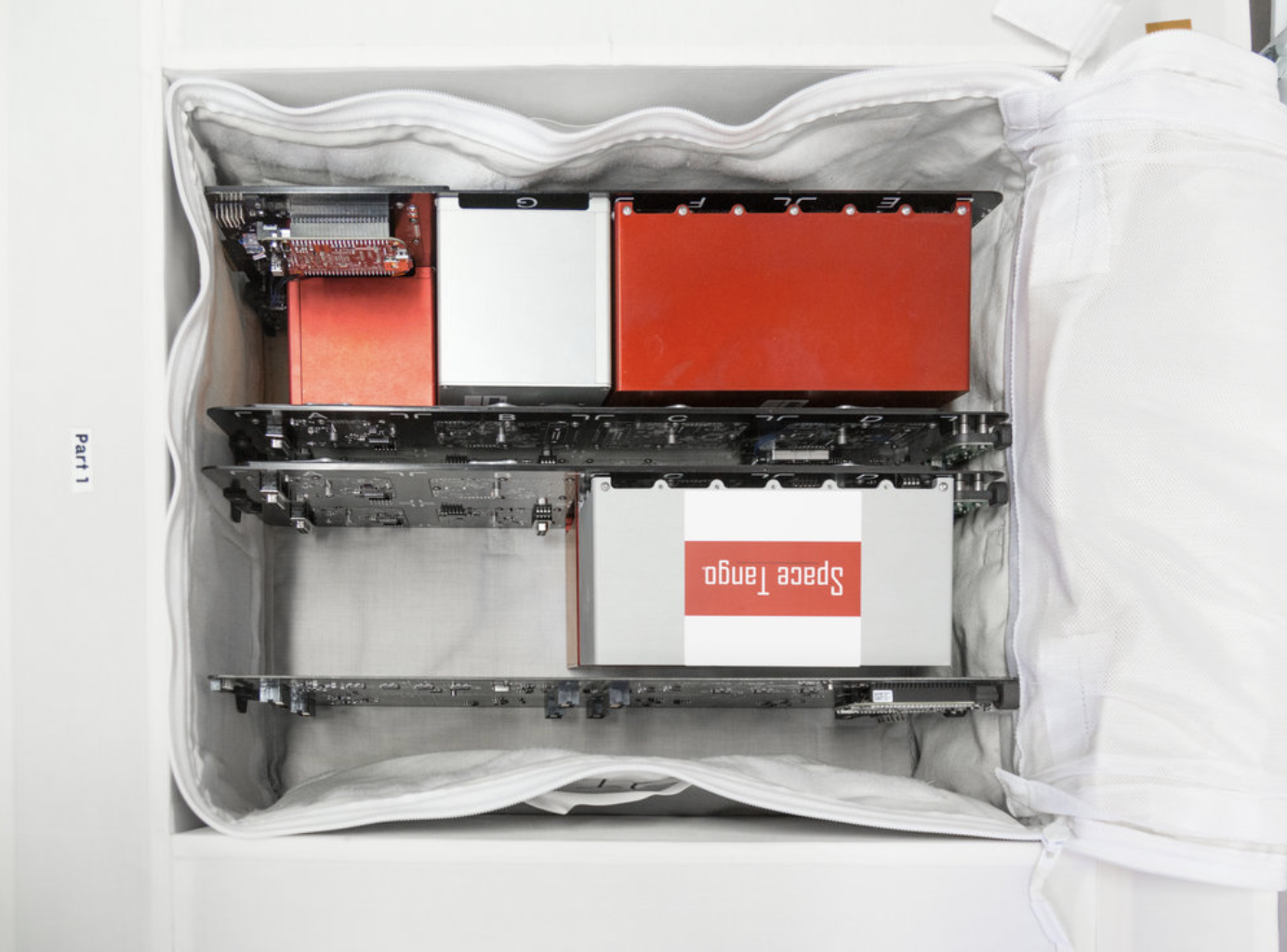
Using Space Tango&CubeLab& modules, which slot into the larger TangoLab containers, companies like Anheuser-Busch can send barley up to the space station to observe how the crop could be cultivated in environments approaching zero gravity.
Now, Space Tango is taking its own steps to develop experiments on how the zero gravity environment could affect cannabis cultivation.
Alongside two Kentucky hemp and cannabis cultivation and retail companies,Atalo Holdings, which provides hemp genetics, andAnavii Market, an online retailer of hemp-derived cannabidiol (CBD) therapeutics, Space Tango has set up its own subsidiary to research how microgravity can be used to better cultivate particular strands of hemp for medical compounds.
&For all entrepreneurial companies in this new space area everyone is trying to hone in [sic] on what is the actual business,&said co-founder and chairman Kris Kimel ofSpaceTango, in an interview. &We&re trying to figure out here whatthe business now… For us, the model is looking at low earth orbit to actually develop and design applications for life on earth.&
Kimel said the company now has two micro-laboratories installed on the International Space Station and has payloads launching to the space station for corporate and university customers about six times a year.
In its early stages, the company is mainly operating on existing income. &We&re able to meet our operating expenses off of revenue,& says Kimel. &Which is great for a company that is not just three years old.&
As it looks to create these kinds of joint ventures with other companies, Kimel said that additional revenue could come from a profit-sharing agreement rather than just straight contracts for services. The new subsidiaries enhance what the company sees as its broader mission, Kimel said.
&Each time a new type of physics platformhas been successfully harnessed such as electromagnetism, it has led to the exponential growth of new knowledge, benefits to humankind and capital formation,& said Kimel, in a statement. &Using microgravity, we envision a future where many of the next breakthroughs in healthcare, plant biology and technology may well occur off the planet Earth.&
Industrialized hemp production and research and development into the crop was enabled four years ago with the passage of the 2014 U.S. Farm Bill. It was the first time in 70 years that new rules were enacted to promote research into applications for the hemp plant as fiber, food or medicine.
By taking the plants to space, Space Tango hopes to study whether the growth of certain strains can be better controlled in the absence of gravitational stresses on the plantdevelopment.
&When plants are ‘stressed,& they pull from a genetic reservoir to produce compounds that allow them to adapt and survive,& said Dr. Joe Chappell, a member of theSpaceTangoScience Advisory Team who specializes in drug development and design. &Understanding how plants react in an environment where the traditional stress of gravity is removed can provide new insights into how adaptations come about and how researchers might take advantage of such changes for the discovery of new characteristics, traits, biomedical applications and efficacy.&
Founded by former NASA engineer Twyman Clements and Kimel, who was serving as the president of the nonprofit Kentucky Science and Technology Corp., Space Tango was spun up to be the for-profit arm that would commercialize experiments in space as a service for large businesses that wanted to take advantage of the unique properties of manufacturing in microgravity.
There have been few commercially viable products that have come from microgravity research or production, in part because itexpensive to bring products from space to earth.
Thatwhy Space Tango has focused on drug discovery and pharmaceuticals and why the company is spinning up its independent subsidiary that will focus exclusively on cannabis. Pharmaceutical compounds are lightweight and can be profitable in production without enormous volumes.
&Thatwhy biomedicine is attractive,& Kimel said. &You&re dealing with products that are incredibly high value and incredibly low weight.&
- Details
- Category: Technology
Read more: Weed in space is going to be a thing now
Write comment (96 Comments)Nearly a year after German fintech startup N26 announced that it would launch its service in the U.K., the company is launching in the U.K. N26 is already quite popular in the Eurozone, with more than 1.5 million customers. In this new market, it will face tough competition from existing players, such as Revolut, Monzo, Starling and many others.
N26 is going to roll out its product in multiple phases. Some lucky few will be able to open an account right away. The startup will then go through its waiting list — 50,000 people already left their email addresses to express interest. After that, anybody will be able to download the app and sign up.
This might sound like a convoluted process, but N26 expects a full public launch in just a few weeks. So it should be quite quick if everything goes as planned.
So what can you expect exactly British customers will get all the basic N26 stuff with one killer feature — U.K. account numbers and sort codes. This way, customers will be able to receive payments and share banking information with their utility providers just like they would with a regular Barclays or Lloyds account.
When you open an N26 account, you get a true bank account and a MasterCard. Basic accounts are free, and N26 has a proper banking license — your deposits up to €100,000 are guaranteed by the European deposit guarantee scheme. You can then send and receive money and pay with your card. Sending money to other N26 users is instantaneous (they call it MoneyBeam).
N26 recently launched Spaces, a new feature that lets you create sub accounts and put some money aside. Itstill limited, but the company plans to add more features.
Your MasterCard works like any other challenger bank. Every time you use it, you receive a push notification. You can set payment and withdrawal limits, lock your card if you lose it and reset your PIN code. N26 will also bring Black and Metal plans to the U.K.
How does it compare to Revolut
Letbe honest, the elephant in the room is Revolut . The company has hundreds of thousands (if not over a million) customers in the U.K. N26 lets you do many of the things you can already do with your Revolut account.
So let me point out a few differences. As I noted, N26 has a banking license and U.K. banking information. N26 cards work in Apple Pay and Google Pay.
When it comes to international payments, N26 lets you pay with your card anywhere in the world without any additional fee. The company uses MasterCardconversion rates. Revolut first converts the money with its forex feature and then lets you spend your money.
There are an infinite number of forum posts about the exchange rates you&ll get. Sometimes Revolut is cheaper, sometimes N26 is cheaper. It mostly depends on the day of the week (Revolut conversion rates are more expensive on the weekend) and the currency. Unless you plan to spend tens of thousands of GBP during your vacation, you won&t see a huge difference on your bank statement.
Revolut also has many more features than N26. You can insure your phone, buy bitcoins, buy travel insurance, create virtual cards and more. Itclear that N26 and Revolut have two different styles.
Revolut has a bigger user base than N26. But italways been a bit hard to compare them, as N26 wasn&t available in the U.K. Of course, they will both say there are tens of millions of people relying on old banks — multiple challenger banks can grow at the same time if they capture market share from those aging players. Still, the battle between N26 and Revolut is on.
- Details
- Category: Technology
Read more: N26 is launching its bank in the UK
Write comment (97 Comments)Kobolatest e-reader is a complete about-face from its anonymous, cheap and highly practical Clara HD; the Forma is big, expensive and features a bold — not to say original — design. Itclearly meant to take on the Kindle Oasis and e-reader fans for whom price is no object.
The $280 Forma joins a number of other e-readers in using a one-handed design, something which is, we might as well admit up front, isn&t for everyone. That said, I&ve found that my reading style on these devices has been able to adapt from one form factor to another — itnot like they made it head-mountable or something. You still hold it like you would any other small device.
It uses an 8-inch E-Ink Carta display with 300 pixels per inch, which is more than enough for beautiful type. The frontlight — essentially a layer above the display that lights up and bounces light off it to illuminate the page — is a Kobo specialty, adjustable from very cold to very warm in cast and everywhere in-between.
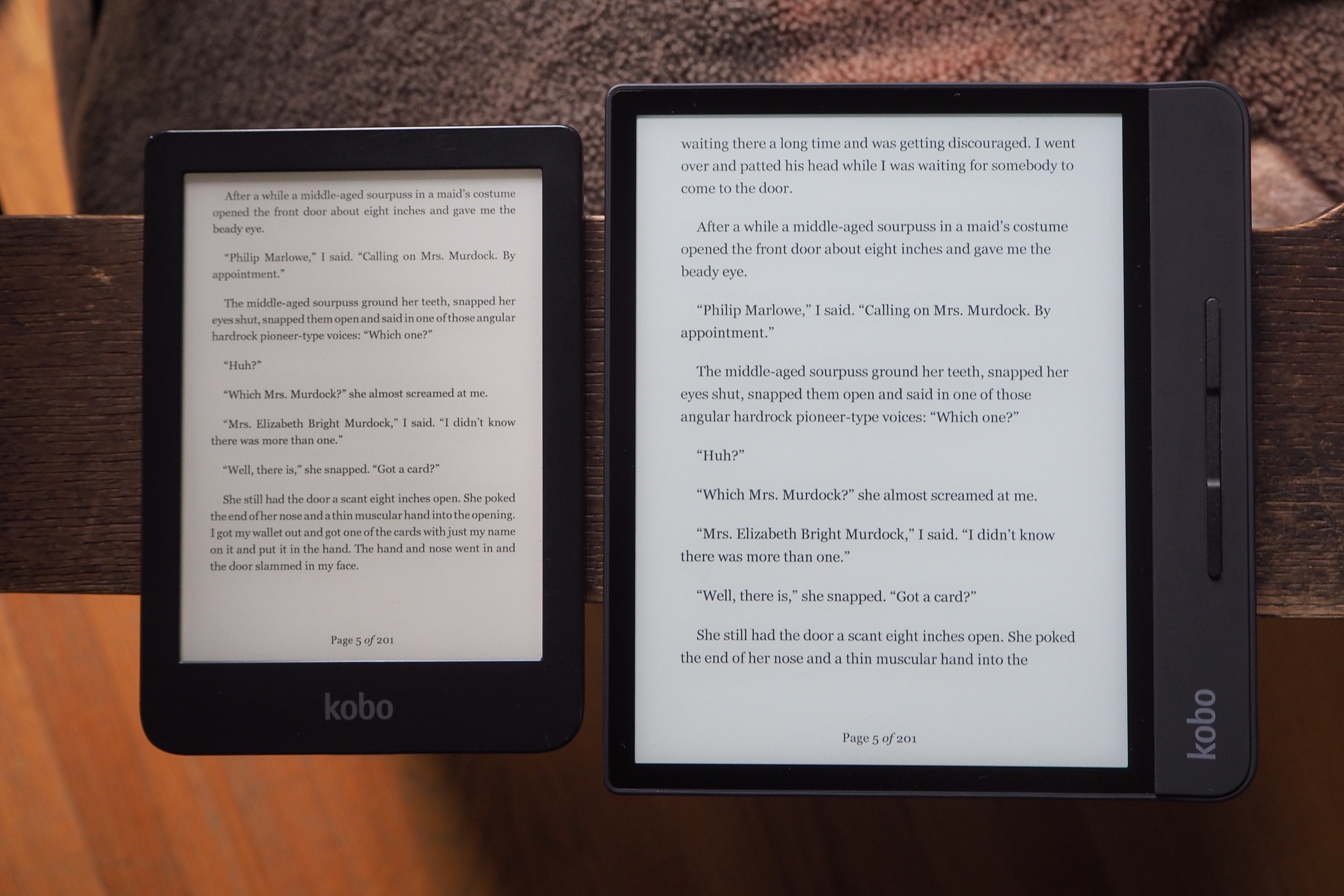
The Clara HD, Kobobest entry-level device, left, and the Forma. (The color cast of the screens is adjustable.)
The screen will be very similar to that of the Aura One, Koboprevious high-end reader, but the Formaasymmetric design gives it slightly closer to square dimensions.
Where it differs from the Kindle Oasis is in size and a couple important particulars of design. The Forma is slightly larger, by about 20 millimeters (3/4″ or so) in height and width, and is ever so slightly but not noticeably thicker. (I didn&t have one to compare on hand, unfortunately.)
Italso worth saying that like all Kobo devices, there are no forced advertisements on this one, and you can load your own books as easy as that. To me Kindles aren&t even an option any more because of the &special offers& and limited file support.
Chin or ear
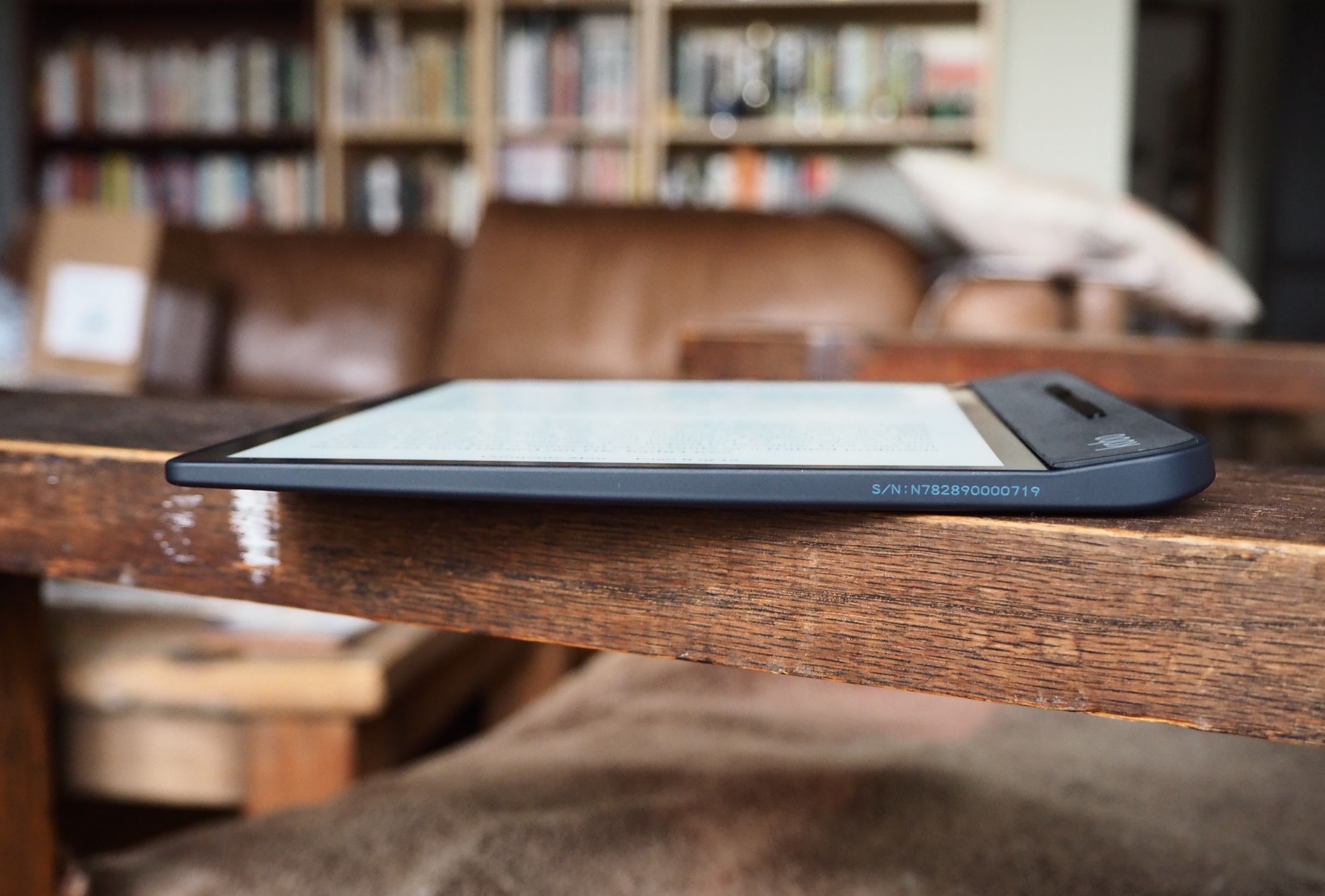
The shape is similar, as anyone can see, but the Kobo team decided to go against having a flush front side and instead give the device a &chin,& as we used to call it on HTC phones, though being on the side it would perhaps more accurately be termed an &ear.& The screen, of course, is flat, but the grip on the side rises up from it at a 15 degree angle or so.
Is this better or worse than having a flush front Aesthetically I prefer the flush screen, but practically speaking it is better to have a flat back so it lies flat when you put it down or prop it against something. That the Oasis sits at a tilt when you set it down on a table is something that bothers me. (I&m very sensitive, as you can tell.)
[gallery ids="1725793,1725785,1725792,1725787,1725788,1725786"]Itstill very light, only 30 grams more than the Clara, the same amount less than the Aura One, and nearly equal to the Oasis. Despite being larger than any of those, itno less portable. That said, the Clara will fit in my back pocket, and this one most definitely will not.
The device is fully waterproof, like the Oasis, although liquid on the screen can disrupt touch functionality (this is just a physics thing). Nothing to worry about, just wipe it off. The USB port is just wide open, but obviously itbeen sealed off inside. Don&t try charging it underwater.

I am worried about the material the grip is made of: a satin-finish plastic thatvery nice to the touch but tends to attract fingerprints and oils. Look, everyone has oils. But the grip of the Forma won&t let you forget it.
Although the power button is mushy and difficult to tell if you&ve pressed it right, the page-turn buttons are pleasantly clicky, and despite their appearance of being lever-like, they can easily be pressed anywhere along their length — which goes forward and which backward switches automatically if you flip the reader over to use the other hand.
This flipping process happens more or less instantaneously, with rare exceptions in my brief testing. Neither side feels more &correct,& for instance because of the weight distribution or anything.
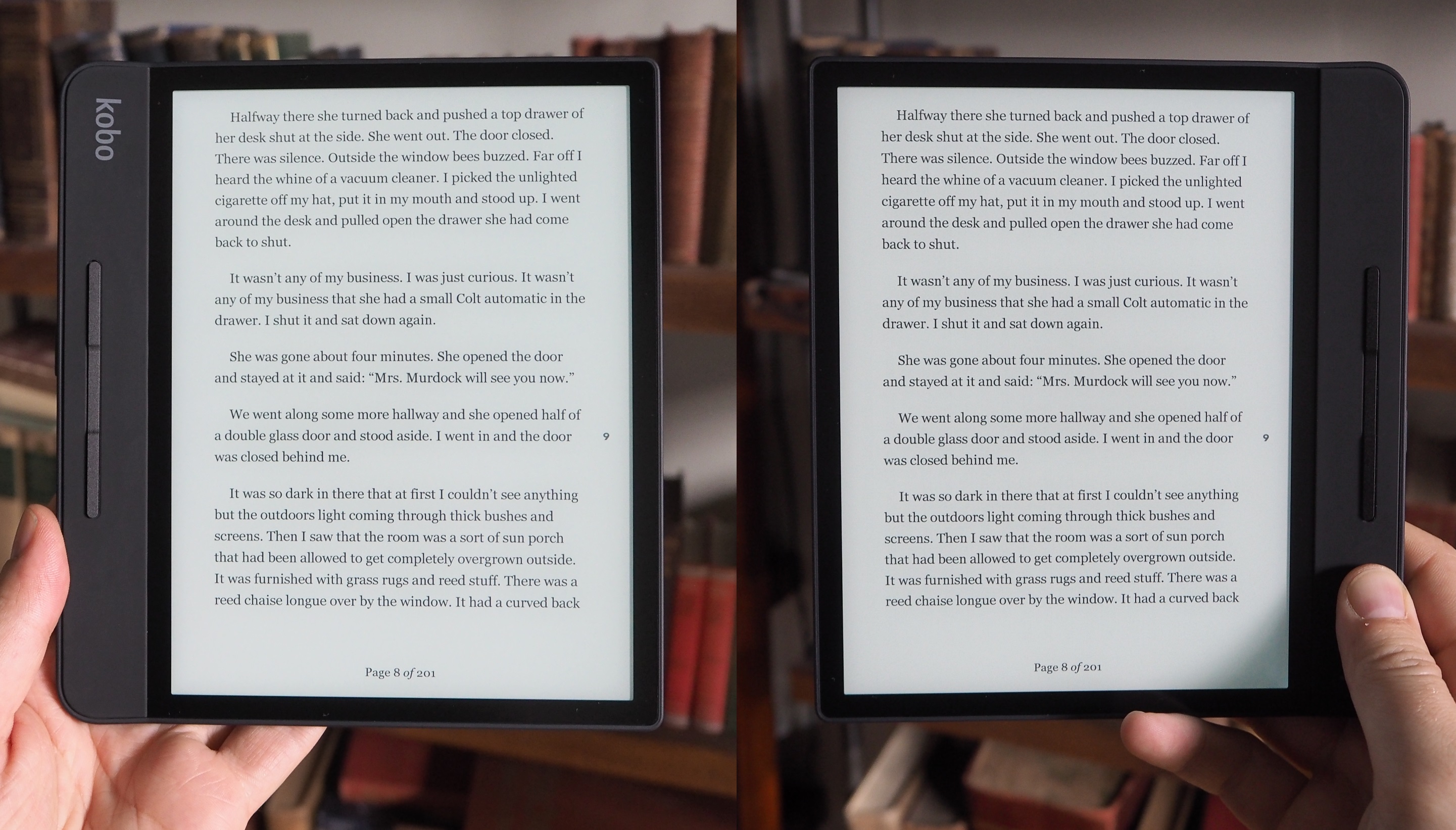
The only one that doesn&t feel correct is the landscape mode. I&m not sure why someone would want to read this way, though I&m sure a few will like it. It just seems like a missed opportunity. Why can&t I have two pages displayed side by side, like a little pocket paperback I&d love that! I&ve already asked Kobo about this and I assume that because I have done so, they will add it. As it is, most books simply feel strange in this mode.
Familiar software, unfamiliar price
Text handling seems unchanged from Koboother devices, which means itjust fine — the typefaces are good and there are lots of options to adjust it to your taste, book by book.
Kobomuch-appreciated drag-and-drop book adding and support for over a dozen formats (epub, cbr, mobi, etc.) is here as well, with no changes. Pocket integration is solid and extremely useful.
The Forma (like Koboother readers) does have Overdrive support, meaning that with a library card and account there you can easily request and read books from your local branchvirtual stock. This is an underutilized service in general (by me as well) and I need to take advantage of it more.
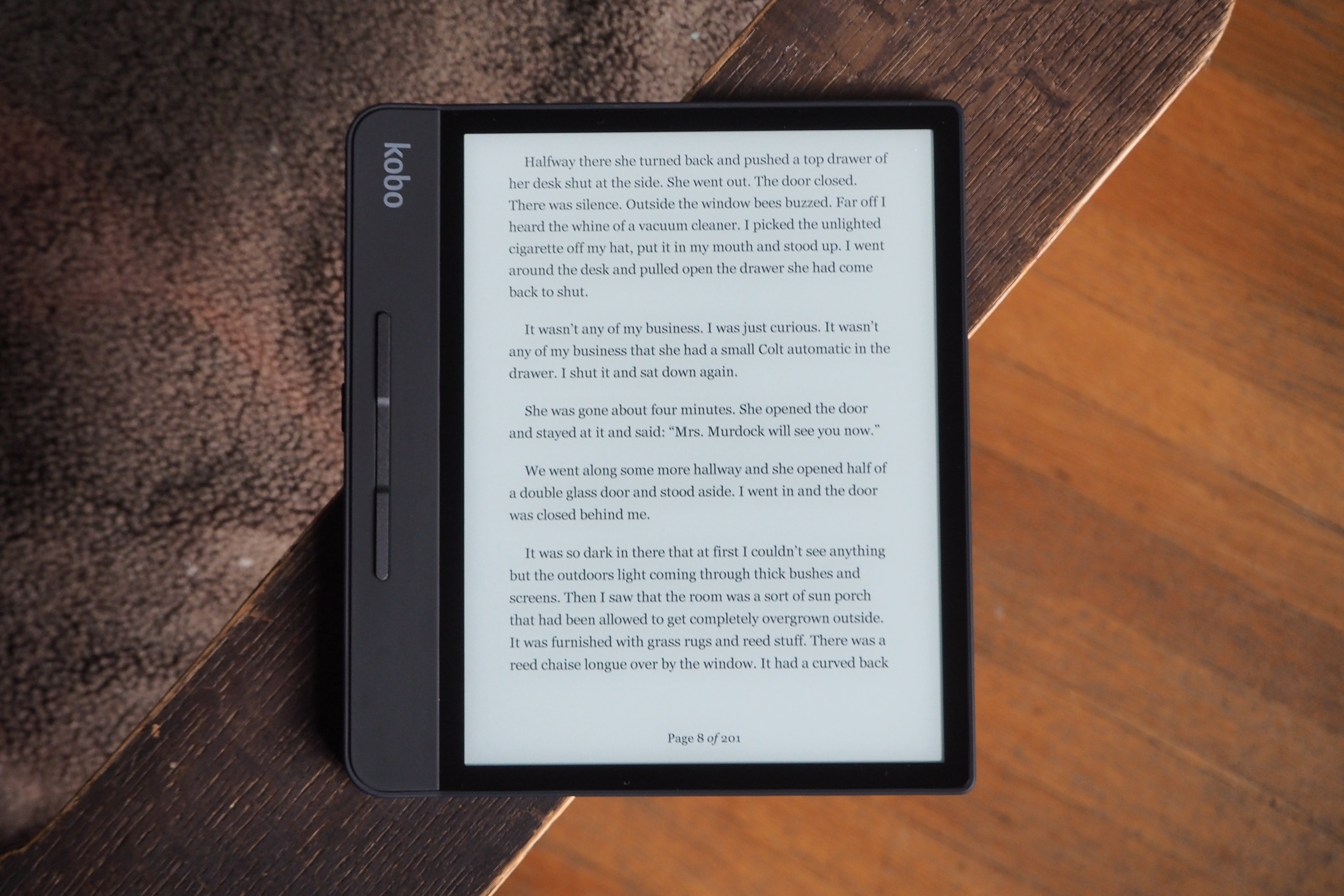
So far, so good. But the real question is whether this thing is worth the $280 they&re charging for it — $30 more than the Kindle Oasis and an even bigger jump over the Aura One. In my honest opinion, for most people, the answer is no. For the dollar you get a lot more from the Clara HD, which also has the advantage of being compact and pocketable.
But it must be said that the Forma is clearly a niche device aimed at people who use their e-reader a lot and want that bigger screen, the waterproofing, the thin profile, the one-handed design. Therea smaller, but not necessarily small, number of people who are willing to pay for that. As it is, the Forma is among the most expensive e-readers out there, and ithard to justify that price for ordinary people who just want a good reader with the warmth control and good type.
The Forma is successful at what it aims to do — provide a credible competitor to Amazonmost expensive device, and beat it at its own game in the ways Kobo usually beats Kindle. That much I can say for certain. Whether to buy it is between you and your wallet. Pre-orders start October 16.
- Details
- Category: Technology
Read more: Kobo’s Forma e-reader takes on Kindle Oasis with an asymmetric design and premium price
Write comment (92 Comments)Over the years, Hadoop, the once high-flying open-source platform, gave rise to many companies and an ecosystem of vendors emerged. It was long believed that some major companies would emerge from the pack, and, sure enough, Hortonworks went public in 2014. Cloudera followed three years later, but the market slowed down and the two companies announced today they are merging in a deal worth $5.2 billion, based on the price at the close of business yesterday.
Part of the problem with Hadoop, even though anyone could download it, was the sheer complexity of it. Thatwhere companies like Hortonworks and Cloudera came in. They packaged it for IT departments that wanted the advantage of a big data processing platform, but didn&t necessarily want to build Hadoop from scratch.
These companies offered different ways of helping to attack that complexity, but over time, with all the cloud-based big data solutions, rolling a Hadoop system seemed futile, even with the help of companies like Cloudera and Hortonworks.
Doug Henschen, an VP and principal analyst at Constellation Research sees the cloud eating into Hadoopmarket in a big way. &The move to the cloud is, in my view, sapping growth and revenue potential for these companies such that it won&t sustain three profitable players with strong, double-digit growth. Cloudera and Hortonworks have both moved to provide consistent hybrid- and multi-cloud capable services, but I see @AWS EMR and Spark services and similar Azure and Google services as capturing faster growth, and together, the lionshare of the big data platforms market,& he explained.
Photo:Garrett Heath on Flickr. Used under CC by 2.0 license.
In an interview in 2017, Carl Olofson, an analyst at IDC, described the differences between the two companies, differences that may help them now as they become a single company:
Olofson described Hortonworks as a &pure open source company,& one that packages, coordinates and manages that open source as a product for a subscription fee, and also sells support. He [said] the companyproducts are aimed mostly at &big data technologists.&
Cloudera is a bit different, he said. &[It] offers packages that are mostly open source, but with tooling that is proprietary, and that are aimed at various classes of business problems. They sell to business managers. So their approach is different, and as a result, they have a higher percentage of their income derived from software than does Hortonworks,& Olofson told TechCrunch.
Sometimes the best answer to a fragmented market is coming together, and thatexactly what the two companies did today. The deal involves an all-stock merger in which each partner gets equal ownership, according to a statement announcing the deal.
Tom Reilly, the long-time CEO at Cloudera, certainly sees the two companies as complementary, offering customers something together that they couldn&t separately. &Our businesses are highly complementary and strategic. By bringing together Hortonworks& investments in end-to-end data management with Clouderainvestments in data warehousing and machine learning, we will deliver the industryfirst enterprise data cloud from the Edge to AI,& Reilly said in a statement.
As you might imagine, Hortonworks chief executive Rob Bearden concurred. &This compelling merger will create value for our respective stockholders and allow customers, partners, employees and the open source community to benefit from the enhanced offerings, larger scale and improved cost competitiveness inherent in this combination,& he said in a statement.
The combined companies will boast 2,500 customers, $720 million in revenue and $500 million in cash with no debt, according to the companies.
Cloudera, which was founded in 2008, raised over a billion dollars before going public, the vast majority coming in one major $740 million burst from Intel Capital in 2014. Hortonworks, founded three years later, raised $248 million.
- Details
- Category: Technology
Read more: Cloudera and Hortonworks announce $5.2 billion merger
Write comment (92 Comments)Suppose the next time you go to a new doctoroffice, you wouldn&t have to balance a clipboard on your knee, write down your whole medical history, remember the five-syllable name of every medication you&re taking and list all your allergies. Suppose that your smartphone could simply tap into the officecomputer system, where you could upload your entire medical history safely, securely and accurately.
Such an app could ease the frustration patients feel when they fill out the forms for a new doctor. More importantly, it could help solve a serious but lesser-known problem that plagues hospitals and clinics: While the increased use of electronic health records has helped streamline record-keeping, providers aren&t always able to reliably pull together records for the same patient that are held in different hospitals, clinics and doctoroffices.
That was the scene in Boston in 2015, when emergency room doctors were struggling to treat a patient namedMaureen Kelly — only to discover five different electronic records for Maureen Kelly, each with the same birthday and ZIP code. They had no way of knowing which record matched the patient in front of them. Was she the Maureen Kelly with diabetes The Maureen Kelly who had only one kidney And if they were to decide to send her record to a specialist outside the hospital, how could they know which of the five to send
Fortunately, Maureen Kelly recovered. But to make the best possible medical decisions in cases like hers, doctors need immediate access to accurate patient data — including those from records held in other facilities. Digital systems should be able to seamlessly match records from a pediatrician in Pittsburgh or a surgeon in San Diego each and every time. An inability to do so — which could mean physicians not having important details, such as a patientdrug allergies, chronic illnesses or past surgeries — can mean the difference between life and death.

Doctors using digital tablet together in hospital (Photo: Ariel Skelley/Getty Images)
Ithard enough keeping records straight within a single large hospital system; transferring them among different doctors& offices and other hospitals is even more challenging. As digital healthcare systems have proliferated, they&ve used a variety of formats to record essential pieces of information, such as addresses and birth dates, that don&t easily transfer from one system to another. And, of course, patients& identifying information isn&t static — birth dates don&t change, but people move, change names through marriage or adoption, and more. Matches among different systems have also been stymied by data entry errors.
And while patient harm is the primary risk posed by inaccurate records, cost is no small consideration. The Office of the National Coordinator for Health Information Technology reported that each instance of a misidentified record cost the Mayo Clinic roughly$1,200 — and thatjust within the Mayo system. These administrative costs are magnified when data are exchanged on a nationwide scale.
No one solution can solve every patient-matching problem. But The Pew Charitable Trusts is investigating several ideas. Pew recently asked the nonprofitRANDCorporation to evaluate solutions that would let patients exercise more control over how their records are matched.RANDlooked at a variety of options and concluded that the growing use of smartphones offers a particularly promising opportunity to improve record matching in two ways.

Photo: Hero Images/Getty Images
First, smartphones could allow patients to verify their phone numbers at the point of care, perhaps by responding to a text message — a strategy already used in banking, travel, retail and other industries. Once a number was confirmed by the patient, the hospitalcomputer could use it automatically to match other records against that number with a higher degree of certainty.
Second, patients could use an app to enter their information — such as an address or even a driverlicense number — and have that information sent directly to the hospital when they check in for their visit. This would let patients update their information and voluntarily provide more accurate data to facilitate a match. Smartphone apps could eventually aggregate and transfer even more information — such as medication lists or health histories — and replace the paper on clipboards used today.
The smartphone approach will not solve this problem by itself. There are potential limitations — patients would need to own phones and know how to use them, and the system might not work in emergency situations when a patient didn&t have or couldn&t operate a smartphone — but the Pew Research Center found earlier this year that more than three-quartersof Americans now use smartphones, including nearly half of people older than 65.
To address the larger problem of patient matching, stakeholders must pursue a variety of solutions, including smartphone apps. Technology developers would be wise to advance and start pilot projects now of smartphones and a variety of other solutions, and demonstrate how they could be used to save lives, improve care and reduce healthcare costs.
- Details
- Category: Technology
Read more: How smartphone apps could help keep health records accurate
Write comment (98 Comments)Page 4008 of 5614

 20
20





